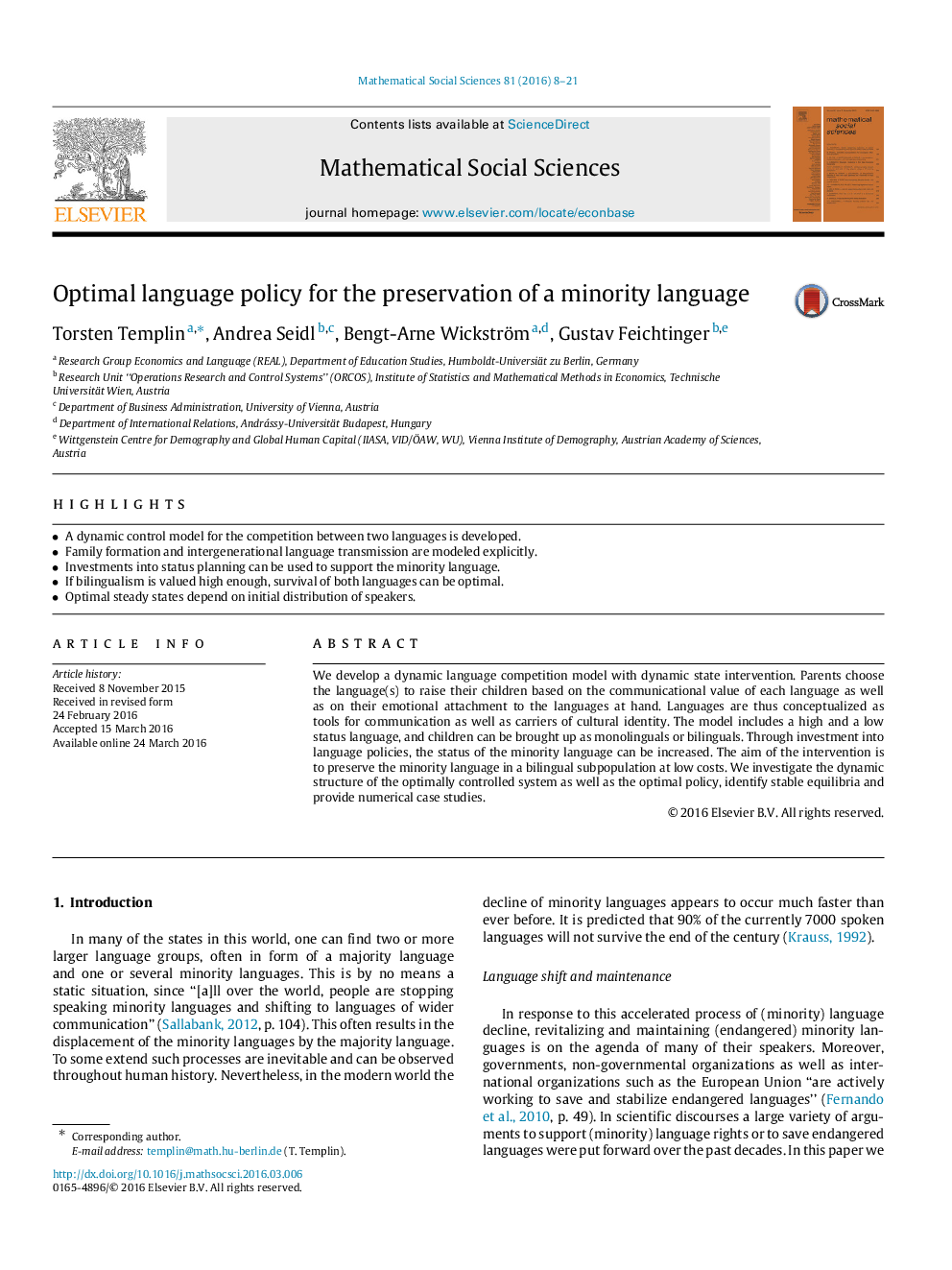| کد مقاله | کد نشریه | سال انتشار | مقاله انگلیسی | نسخه تمام متن |
|---|---|---|---|---|
| 972489 | 1479737 | 2016 | 14 صفحه PDF | دانلود رایگان |
• A dynamic control model for the competition between two languages is developed.
• Family formation and intergenerational language transmission are modeled explicitly.
• Investments into status planning can be used to support the minority language.
• If bilingualism is valued high enough, survival of both languages can be optimal.
• Optimal steady states depend on initial distribution of speakers.
We develop a dynamic language competition model with dynamic state intervention. Parents choose the language(s) to raise their children based on the communicational value of each language as well as on their emotional attachment to the languages at hand. Languages are thus conceptualized as tools for communication as well as carriers of cultural identity. The model includes a high and a low status language, and children can be brought up as monolinguals or bilinguals. Through investment into language policies, the status of the minority language can be increased. The aim of the intervention is to preserve the minority language in a bilingual subpopulation at low costs. We investigate the dynamic structure of the optimally controlled system as well as the optimal policy, identify stable equilibria and provide numerical case studies.
Journal: Mathematical Social Sciences - Volume 81, May 2016, Pages 8–21
